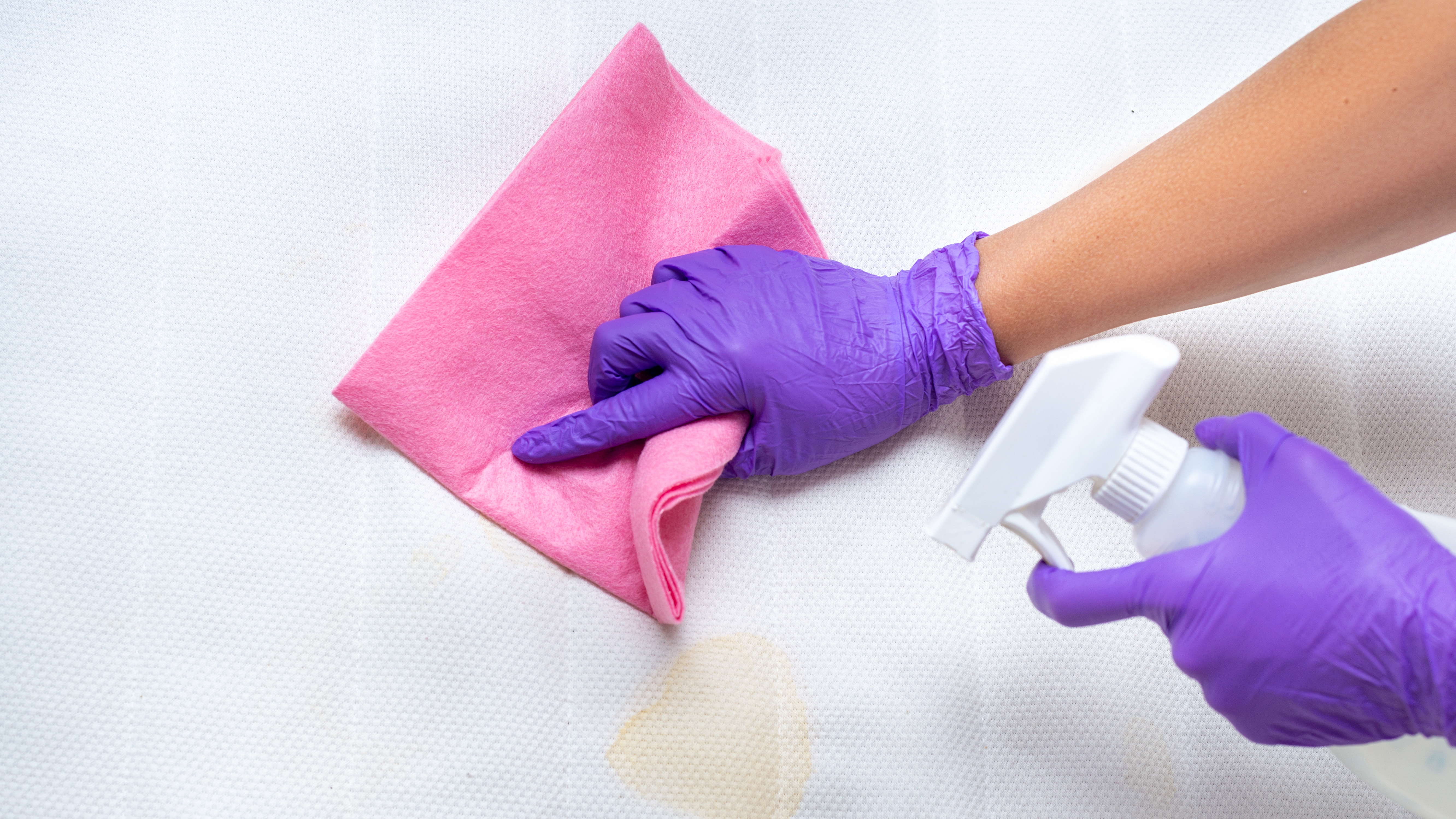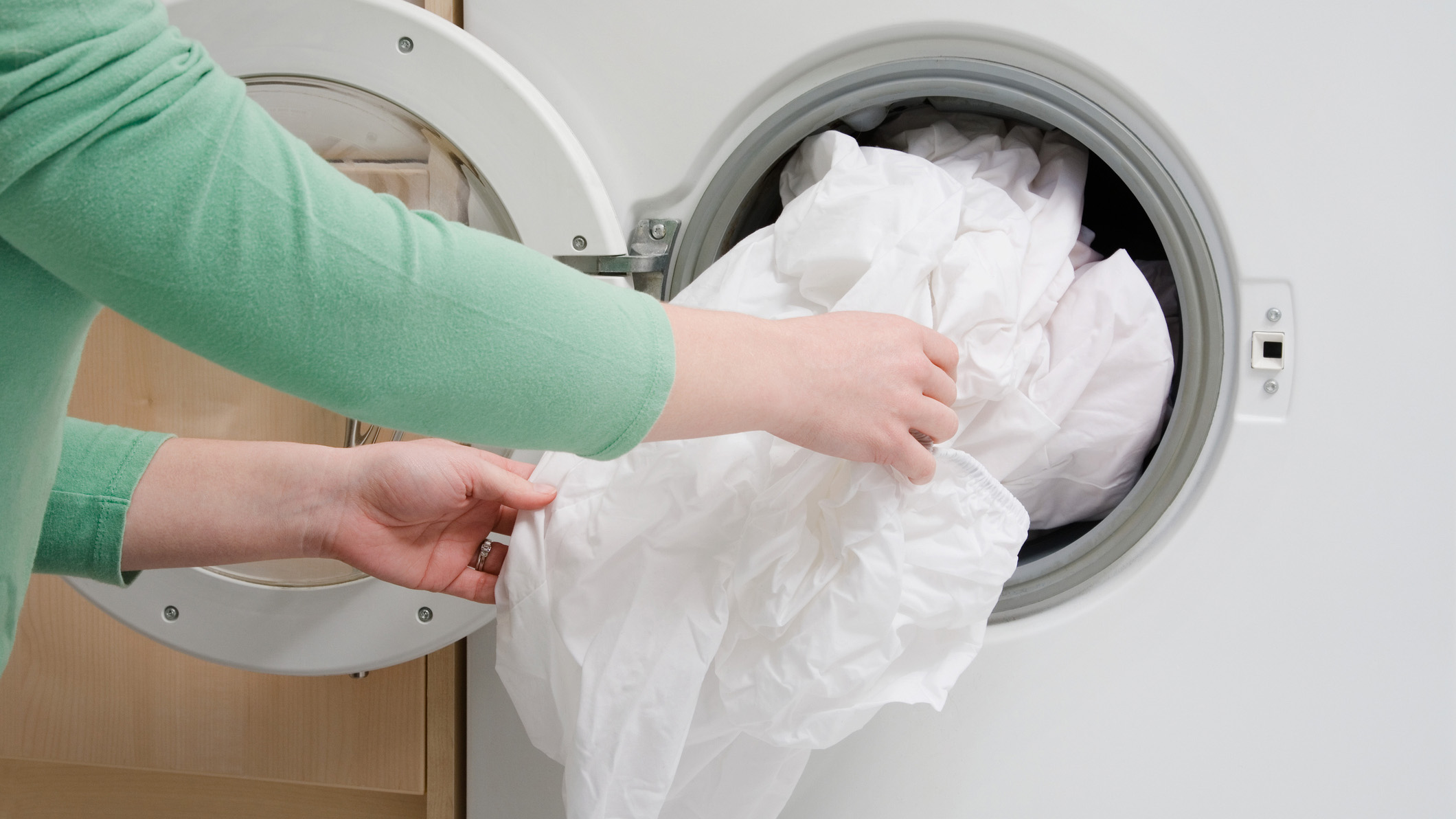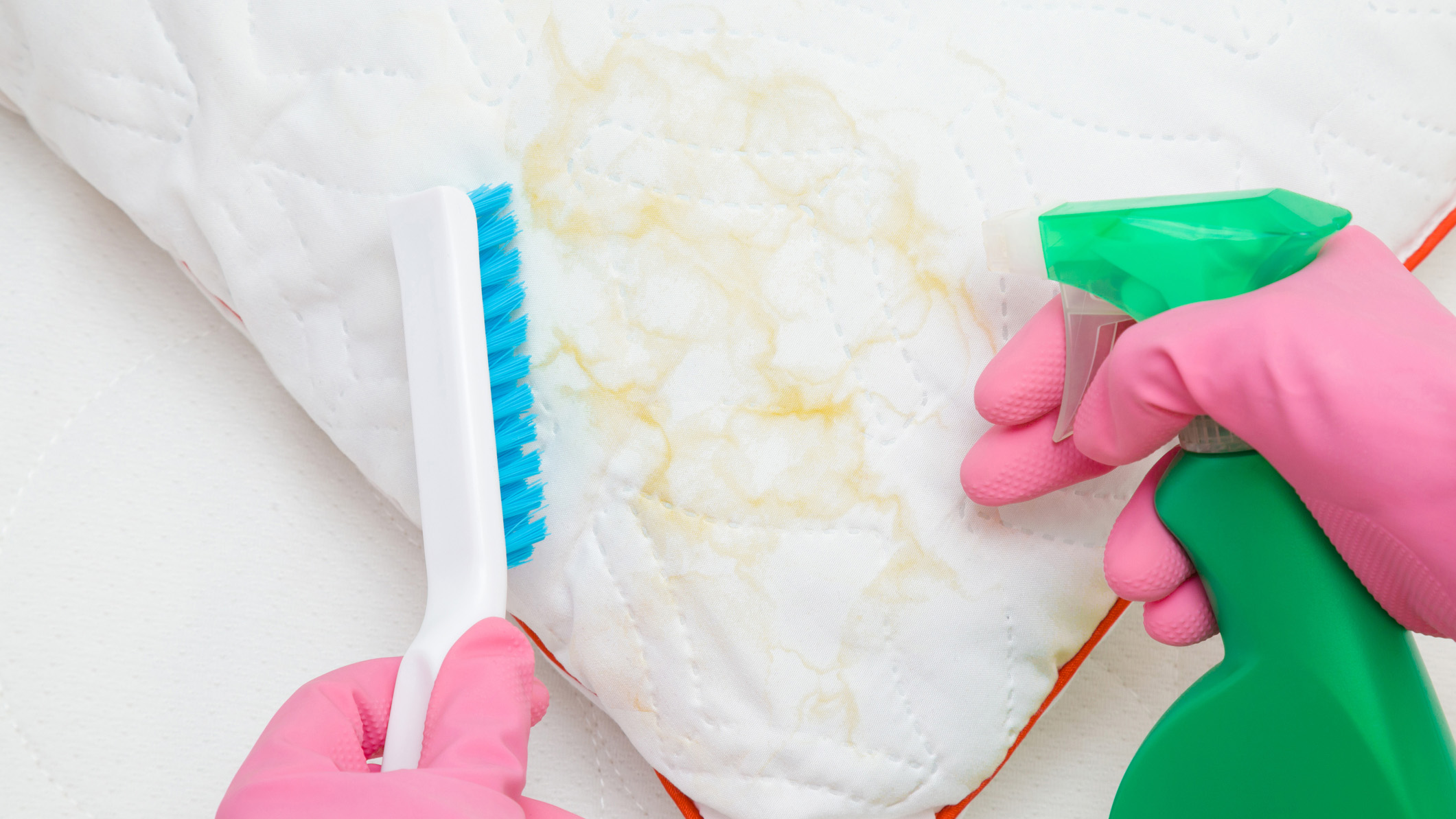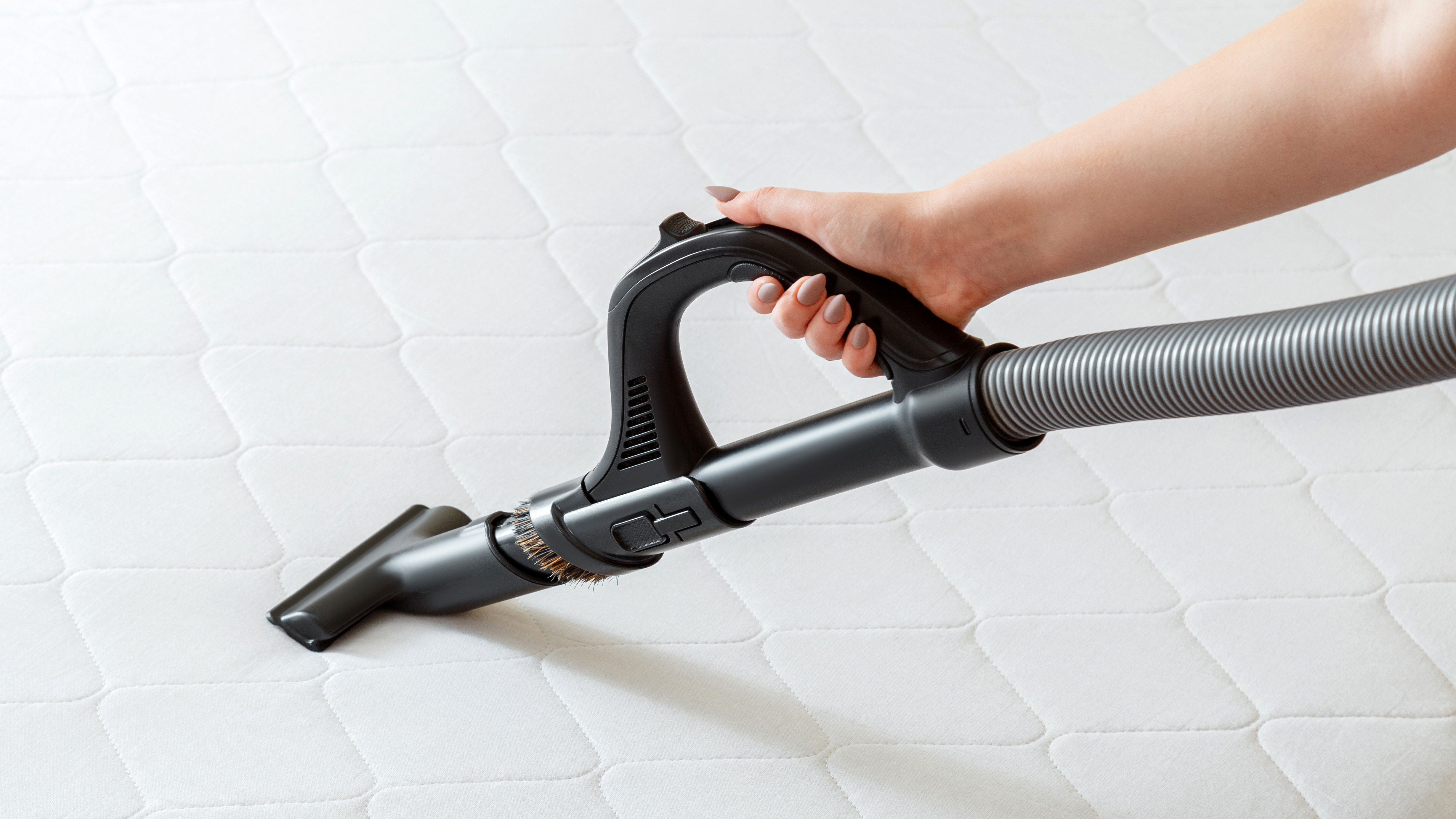
Improved sleep quality and hygiene are among the benefits of deep cleaning your mattress. But when faced with stubborn mattress stains, it can be difficult to know what cleaning products are (and aren’t) safe to use. Hydrogen peroxide is a safe and effective way to get rid of stubborn mattress stains, provided that you use it correctly.
As a mild bleaching agent and disinfectant, hydrogen peroxide helps remove urine and sweat stains — as well as mold and dust mites — without leaving behind any harmful residue. Not only is a clean mattress good for you and your sleep, it will also help prolong the life of your bed (which, if you’ve recently invested in one of the best mattresses of 2024, is hugely important.)
Here, we outline our step by step guide to using hydrogen peroxide safely in order to get the best results when cleaning your mattress. However, if you feel your bed is past its best and no longer feels comfortable, it might be time to think about replacing it. The good news is that with the Memorial Day mattress sales right around the corner, now is one of the best times to invest in a new bed. But first, let's get cleaning.
Is it safe to clean your mattress with hydrogen peroxide?
It is safe to clean your mattress with hydrogen peroxide, provided that you use it correctly. Hydrogen peroxide is a common ingredient in many household cleaners, due to its disinfectant, antiseptic, and oxidizing properties. It is also a mild bleaching agent, which makes it especially useful when tackling stains.

It is typically sold in various concentrations but common household hydrogen peroxide is usually around 3%. If buying as a standalone product, look for a diluted solution (or dilute it yourself) as the higher the concentration, the more caustic is it which can cause irritations or burns.
Whilst hydrogen peroxide is safe to use, you should still follow some precautions when working with this substance. Always make sure you use it in a well-ventilated place and wear gloves to avoid any skin irritations. Also, always check the care instructions on your mattress as hydrogen peroxide may damage or discolor certain materials and fabrics, such as memory foam.
What are the benefits of cleaning your mattress with hydrogen peroxide?
There are several benefits to using hydrogen peroxide when deep cleaning your mattress. However, its effectiveness at lifting stubborn stains is why this cleaning agent is growing in popularity. Unless you’re using one of the best mattress protectors, the combination of sweat, natural body oils as well as any spills or accidents can contribute to yellow stains appearing on your bed.
Hydrogen peroxide breaks down the proteins in these stains, which helps to lift and ultimately remove them, improving not just the overall appearance of your mattress but also removing any odors in the process.
In addition to lifting unsightly stains, hydrogen peroxide is also a powerful disinfectant and can help to kill bacteria, viruses and mold spores that may be present on your mattress, leaving you to enjoy a fresher, cleaner and more hygienic sleeping environment. Compared to some harsh cleaners on the market, hydrogen peroxide is an environmentally friendly option meaning you get great results whilst reducing your environmental impact.
A step by step guide to cleaning your mattress with hydrogen peroxide
Cleaning your mattress with hydrogen peroxide is pretty simple, here are a few things you'll need followed by a step by step guide on how to undertake the task safely.
- Vacuum cleaner with an upholstery attachment
- Baking soda (optional)
- 3% hydrogen peroxide solution
- Distilled water (optional)
- Spray bottle
- Clean cloth or paper towels
- Gloves
Step 1. Prepare the area

Before cleaning your mattress with hydrogen peroxide, you need to do some prep work. First, strip all the bedding - including mattress protectors and covers - and pop them in the washing machine. Yellow stains on pillows also need to be dealt with so add a cup of hydrogen peroxide to the washing machine when laundering your pillows to help lift stains and kill any lingering bacteria.
Once your bedding has been removed vacuum the entire mattress surface using an upholstery attachment to remove any loose dust, debris or pet dander. Pay particular attention to the sides of the mattress, as well as the base and the headboard.
Step 2. Make your mixture
Even if you’re not prone to skin irritations, it’s advisable you wear gloves when handling hydrogen peroxide.
To make your cleaning solution, take a spray bottle and add an equal mix of 3% hydrogen peroxide and water. We recommend using distilled water if you can to ensure it won't leave behind any water marks or stains from the minerals found in tap water.
Now is the time to perform a small spot test to make sure that your mixture doesn’t cause any damage to the fabric on your mattress. Choose an area where you won’t see any damage. Spray the mixture and leave for around 15-20 minutes. If you notice any discolouring then it’s not recommended that you use it on the rest of your mattress.
Step 3. Get to work on the stains
Holding the bottle a few inches above your bed, spray any stains in a circular motion. Spraying in this way will ensure that your mattress doesn’t get saturated but still wet enough that it will work.

Leave the mixture to work for around 15 minutes before blotting away any excess moisture with a clean, dry cloth. You can repeat this step as many times as you need to until you start to see the stain lifting. However, avoid oversaturating your bed in order to prevent it from becoming a mold and mildew hotspot.
If you’re tackling an especially stubborn stain then you may want to sprinkle on some baking soda to the stain, before spritzing with neat 3% hydrogen peroxide. Wait for a maximum of 20 minutes before wiping it away.
Step 4. Add a dusting of baking soda (optional)
This step is completely optional but if you want to get rid of any funky smells then adding a light dusting of baking soda over the entire surface mattress after spraying your mixture. Using a soft brush, work the baking soda in to the mattress and leave for at least 30 minutes (if not longer) to dry.
The longer you leave it, the more likely you will be to see results. Baking soda and hydrogen peroxide make good partners when it comes to getting rid of stains and odours, and it’s particularly effective at ridding your mattress of any dust mites that may be loitering around.
Step 5. Vacuum the mattress and allow to air dry

Once you’ve left your hydrogen peroxide mixture to work it’s magic, it’s time to vacuum your mattress again. Using the upholstery attachment, pay particular attention to any seams or folds in the fabric. Finally, allow your mattress to air dry completely before re-making it. Mold and mildew thrive in moist environments, so avoid locking in any moisture.







